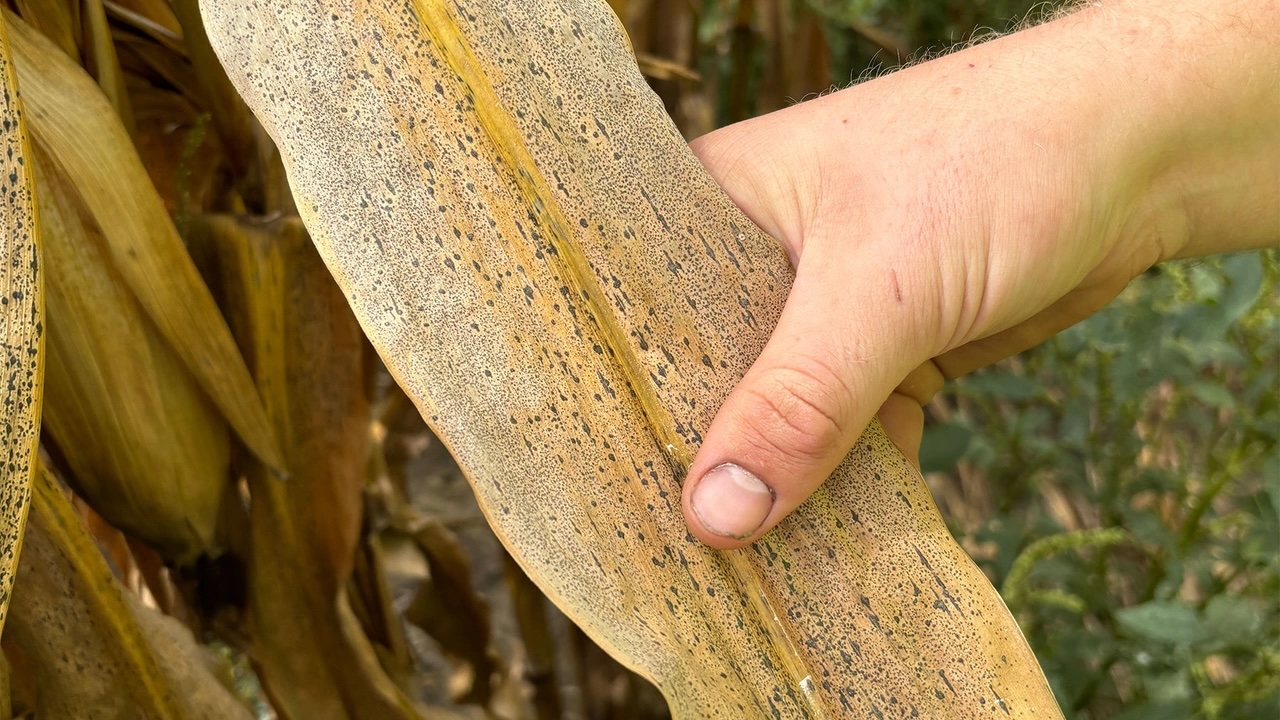Find best routine for tar spot prevention

Answers are from the Indiana certified crop adviser panel: Gene Flaningam, Flaningam Ag Consulting, Vincennes; Carl Joern, Pioneer, Lafayette; Greg Kneubuhler, G&K Concepts, Fort Wayne; and Dan Quinn, Purdue Extension corn specialist.
I did not find much tar spot in 2024, but others did. Some suggest making multiple fungicide passes this year. Is that wise? If so, how many passes? When?
Flaningam: Review your corn hybrid’s tar spot resistance to plan for management. Universities are still recommending applying at VT stage for the best return on investment. Planting date will make a big difference on whether you make a second fungicide application. Later-planted fields are prime candidates due to the later grain fill period when tar spot is usually at its peak infestation.
Joern: While two applications may be profitable in years of heavy pressure, effective management often hinges on proactive scouting. Tar spot is a disease that separates those who take the time to scout their fields from those who simply “windshield scout.” In just two weeks, a field can go from appearing healthy to being too late to save. Start scouting two weeks prior to tassel. Often, black spots will appear lower in the canopy. Tar spot can spread from neighboring fields, so avoid focusing solely on the bottom of the canopy.
When you first detect tar spot, document the location, how many plants are affected and severity. Return to the same spot in a few days and observe any changes. Tar spot is extremely sensitive to environmental conditions and requires extended periods of leaf wetness for new infections.
If incidence and severity increase, check with your applicator to schedule the fungicide application. Ideally, the first application should be made prior to 5% stromata coverage on the ear leaf or leaves just below it, typically between VT and R2. If tar spot is not present, you may delay the application until early R3.
Fungicides provide 10 to 21 days of protection under heavy pressure. If disease pressure increases, or in cases of irrigated fields or a wet forecast, consider a second application for yield preservation and harvest standability. This second application must occur prior to dent.
Kneubuhler: Up until now, the best use of money has been to make fungicide applications at tassel or thereafter. Most of the combination strobilurin and triazole fungicides have shown to be very effective against tar spot. Additional work and data are supportive of making an additional pass, which may fall just prior to tassel or later in the season. That can get costly, and logistics become an issue. But in certain parts of Indiana, tar spot pressures are intense enough that two applications are proving worthy.
The most consistent approach is to make the first application as soon as tassels are out and a second application about 18 to 21 days later.
Quinn: Multiple fungicide passes should only be made in fields with severe cases of tar spot. This is often when tar spot is found early in the season at one to two weeks before tassel emergence and when conditions are conducive for severe infection and spread. Therefore, if you are not finding it much, you likely should only be targeting one spray at VT/R1 or no spray at all. A fungicide application at the R1 growth stage is often the most consistent application year in and year out for controlling foliar diseases and improving yield.

